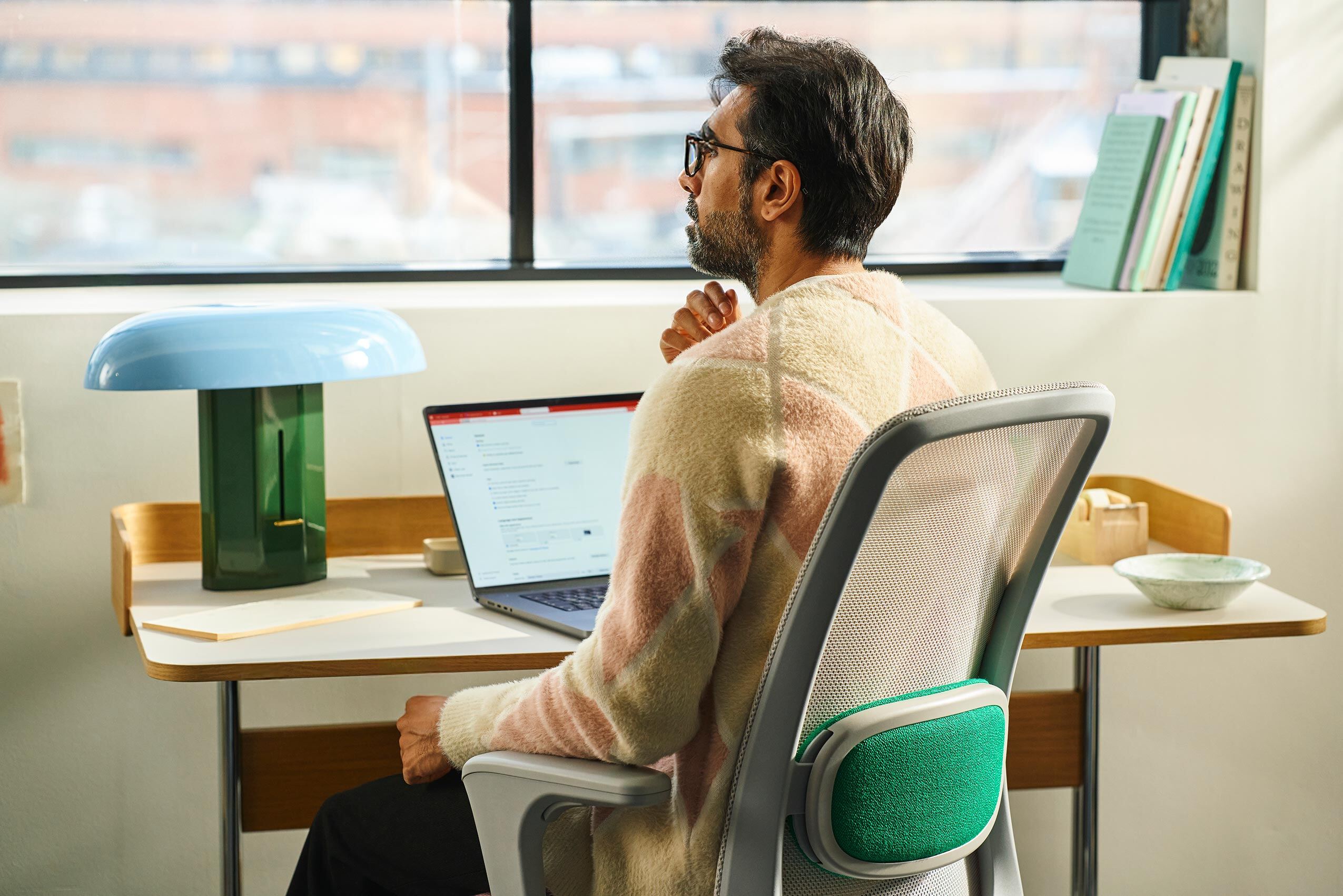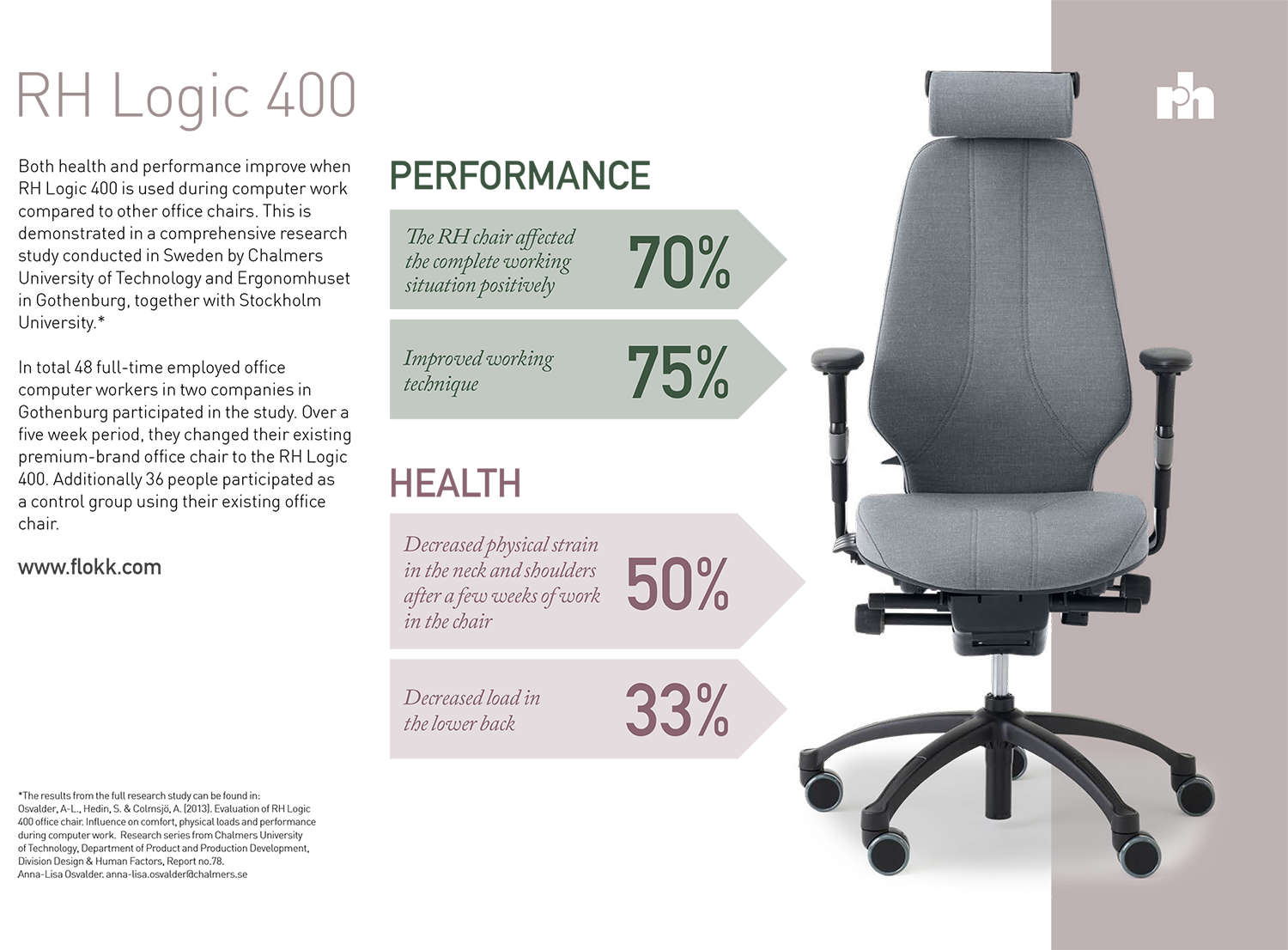Your chair isn’t just where you sit – it’s where your work happens.
Employee well-being is now a top priority in the modern workplace. A Mindspace study found that 90% of employees consider well-being support critical when choosing an employer.
While mental health programmes and flexible hours are important, your physical workspace – especially the chair you sit in every day – has a huge impact on both health and performance.
What makes a chair “ergonomic”?
A good ergonomic chair adapts to your body – not the other way around.
Ergonomic chairs support healthy posture, reduce strain, and encourage movement – helping to prevent discomfort and injury throughout the day.
👉 Here’s a deeper look at the concept of ergonomics.
Why ergonomic seating matters for well-being
Discomfort at work drains energy, focus, and morale.
A recent study found that people now sit for an average of 10.4 hours per day. Without proper support, that can lead to back pain, fatigue, and long-term musculoskeletal disorders (MSDs) – one of the main causes of workplace absenteeism.
Ergonomic seating helps to:
- Prevent injury and strain
- Improve daily comfort and posture
- Boost physical and mental well-being
The productivity payoff
Comfortable employees are focused, energised, and more productive.
When seating supports the body properly, employees experience fewer distractions and can stay engaged for longer. Chairs that promote movement also improve circulation and reduce fatigue.
Benefits include:
- Better focus
- Higher energy
- Fewer breaks and sick days
Backed by research: well-being equals business results
According to new research from Harvard Business Review (2025), workplace well-being isn’t just good for people – it’s good for business. The study found that “risk, health, and safety” is one of six key drivers of employee well-being.
Companies that invest in structural improvements – like ergonomic seating – see:
- higher employee satisfaction
- lower turnover
- better productivity and performance
Ergonomics is no longer just about comfort – it’s a strategic advantage.
Long-term value for employers
Ergonomics is an investment in people – and performance.
Providing proper seating shows employees that their health and well-being matter.
Long-term payoffs include:
- fewer injuries and absences
- higher retention and morale
- better business outcomes
In fact, a Flokk study with Chalmers University found that 70% of users reported better performance after switching to RH Logic 400 chairs.
Final thought
Great work starts with great support.
Ergonomic seating improves comfort, focus, and long-term health. And now, with fresh research backing it, it’s clear: investing in well-being also means investing in business success.
The message is simple: when you design workplaces with people in mind, performance follows. As expectations around work continue to evolve, the companies that prioritise the basics – like how people feel physically at their desks – will be the ones that attract and retain top talent. Ergonomic furniture isn’t just a trend. It’s a long-term commitment to healthier people, and healthier organisations.
👉 Explore our full range of ergonomic task chairs and see how better seating can support better work.




